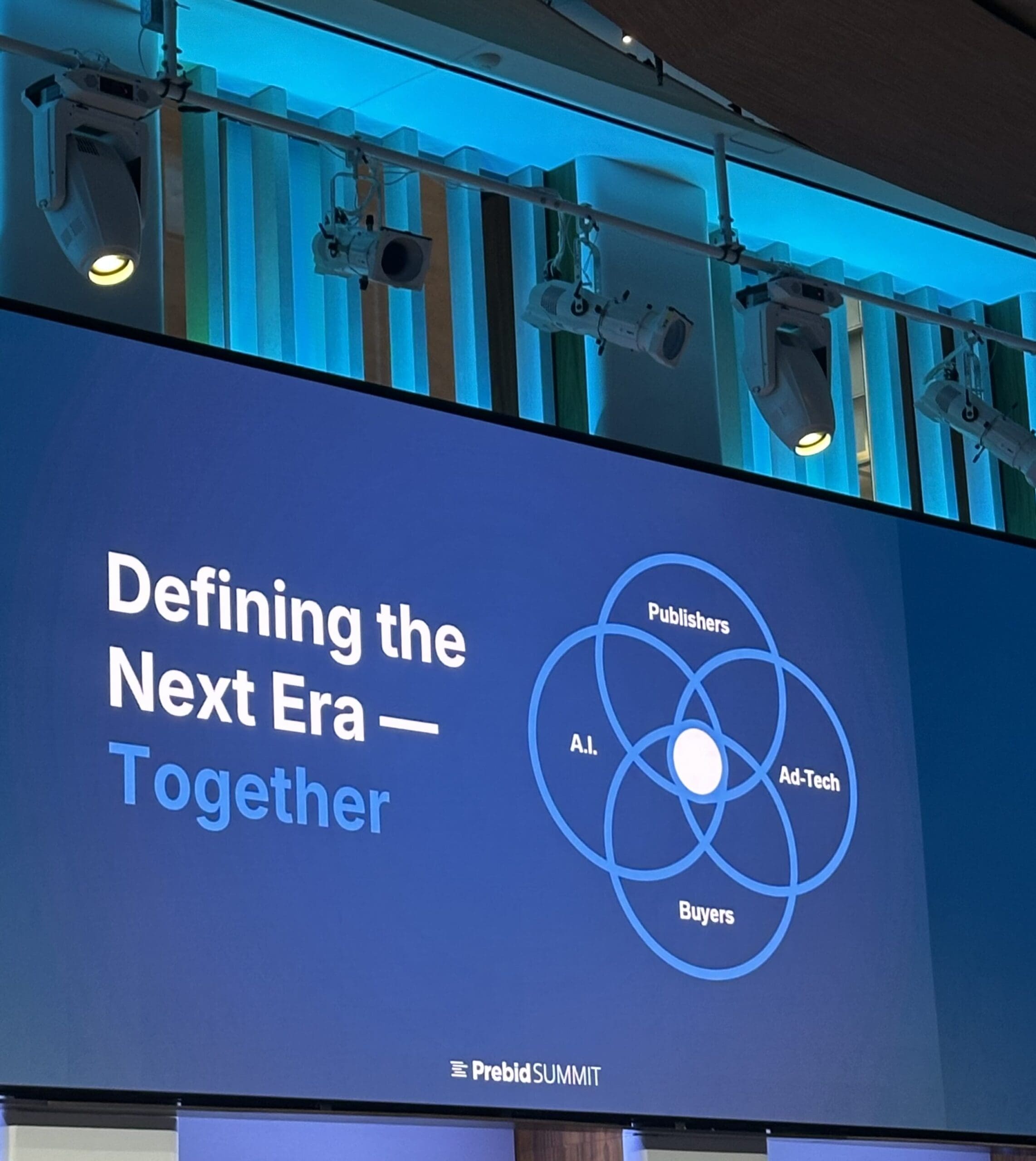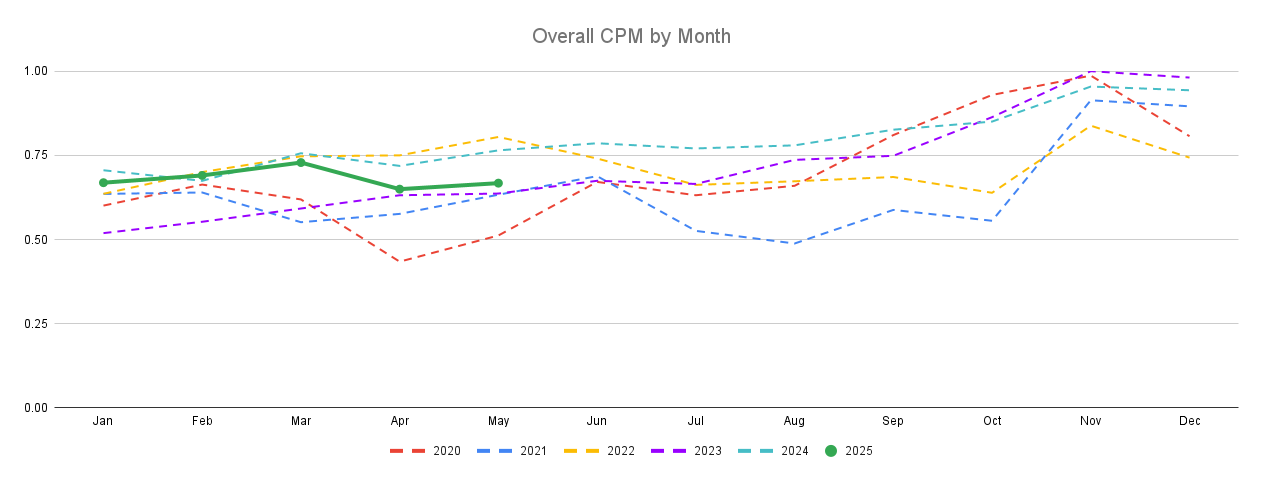For publishers monetizing through Google Ad Manager (GAM), understanding the role of Multiple Customer Management (MCM) is essential. MCM governs how publishers can access Google Ad Exchange (AdX) demand through an authorized partner. This is now the standard framework for scaled monetization relationships.
This article provides a clear explanation of what MCM is. Covers the differences between its delegation types, and how publishers can determine the right structure based on their resources, goals, and technical capabilities.
MCM and AdX: How They Work Together
MCM (Multiple Customer Management) is the framework that connects a publisher to a monetization partner’s Google AdX account. It doesn’t serve ads directly, that job belongs to Google Ad Manager (GAM). MCM is required if a publisher wants to access Google AdX demand through a third party.
AdX is Google’s real-time programmatic marketplace, where demand partners bid on available inventory. Most publishers cannot access AdX directly and instead rely on an MCM relationship with an authorized partner.
Here’s how it all fits together:
- GAM handles ad serving—it’s where ad units live and creatives are trafficked.
- MCM authorizes the partner to use their AdX account to sell the publisher’s inventory.
- AdX runs the auction and delivers the winning ad creative to the page.
Once the MCM link is in place, publishers can monetize through AdX using one of two delegation types.

MCM Explained
Multiple Customer Management (MCM) is Google’s system that allows one company (the parent) to give other publishers (the children) access to its Google Ad Exchange (AdX) demand. This is required when a publisher does not have its own AdX account and wishes to monetize programmatically through a third party.
The MCM framework replaced the older Scaled Partner Management (SPM) program and now serves as the only path for publishers to access AdX demand through a partner.
It’s important to clarify that MCM is not an ad server. Its sole purpose is to authorize the parent to monetize a child publisher’s inventory through AdX. Ad serving is still handled through Google Ad Manager (GAM), either by the parent or by the publisher, depending on the selected delegation type.
| Google Ad Manager (GAM) | Multiple Customer Management (MCM) |
| Ad server platform | Delegation system for AdX access |
| Used to manage and serve ads | Used to link publishers to a partner’s AdX |
| May be owned by publisher or partner | AdX is always owned by the parent partner |
Delegation Types: MI vs. MA
When a parent onboards a publisher through MCM, Google requires them to choose one of two delegation types:
- Manage Inventory (MI)
In this model, the publisher does not need to operate their own GAM account. The parent (e.g., Adapex) manages ad serving through its own GAM instance, handling all setup, optimization, and reporting on the publisher’s behalf.
This is the most common structure, particularly for publishers without (or limited) internal ad operations teams or those looking for a streamlined, fully managed monetization solution.
Key Advantages:
- No need to apply for or manage a GAM account
- Fast implementation and onboarding
- Monetization runs through the parent’s fully optimized GAM environment
- All trafficking, approvals, troubleshooting, performance monitoring, optimizations, and demand access are managed by the parent
- Manage Account (MA)
In this model, the publisher owns and operates their own GAM account, but the parent is granted permission to deliver AdX demand within that environment. This delegation type requires that the publisher’s GAM account is fully approved by Google and actively maintained.
MA is better suited to publishers with dedicated ad ops teams and the need for full control over inventory management and reporting.
Key Considerations:
- Requires a GAM 360 account in good standing
- Publisher is responsible for ad unit setup, reporting, approvals, monitoring violations, and performance
- Slower onboarding and increased technical oversight
- AdX demand still flows through the parent’s account, but within the publisher’s GAM
Additional Benefits of MCM
In addition to AdX access, MCM enables publishers to benefit from the parent’s GAM 360 features, including:
- Google Open Bidding – Access to additional demand from top exchanges in real-time, with simplified payments and improved performance.
- Programmatic Direct Deals – Eligibility for Programmatic Guaranteed and Preferred Deals, often with higher CPMs and direct brand relationships.
- Creative and Ad Quality Controls – Use of advanced ad blocking tools and protections via the parent’s GAM 360 account.
- Ad Ops Outsourcing – Ability to fully outsource ad operations to the parent or a third party, without giving up control of inventory or policy decisions.
Final Thoughts
MCM is the foundation of modern programmatic monetization via Google Ad Exchange. It is not a feature of GAM itself, but a required link that enables third-party partners to provide AdX demand access to publishers.
For most publishers, especially small to mid-sized teams or those focused on growing their content, Manage Inventory (MI) is the most efficient and effective way to monetize. It’s fast to implement, doesn’t require you to manage GAM, and gives you access to premium demand without the complexity.
To learn more about how MCM evolved from earlier monetization frameworks like Scaled Partner Management, refer to our original overview here.













